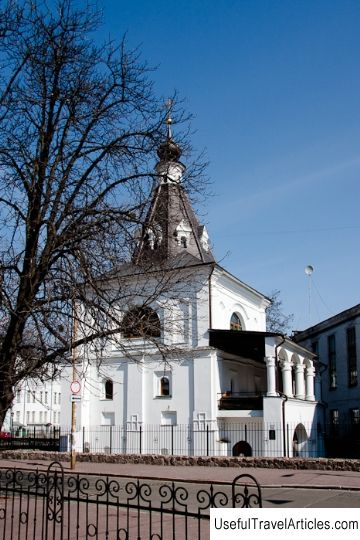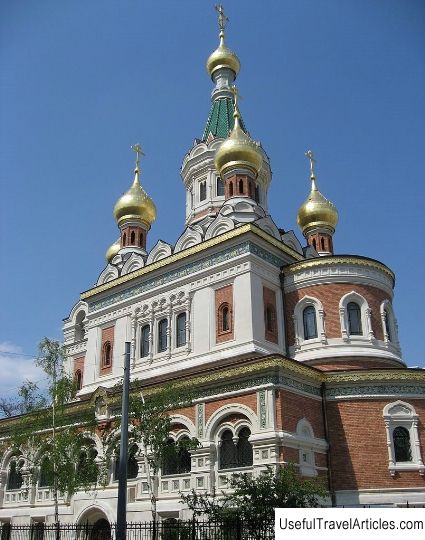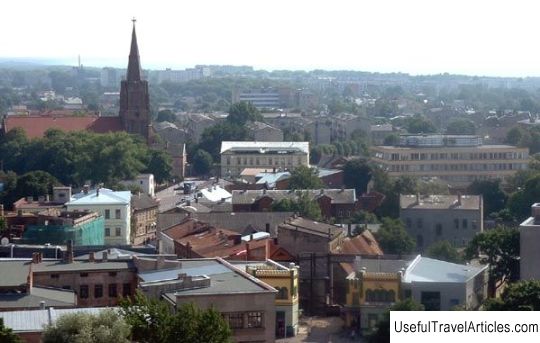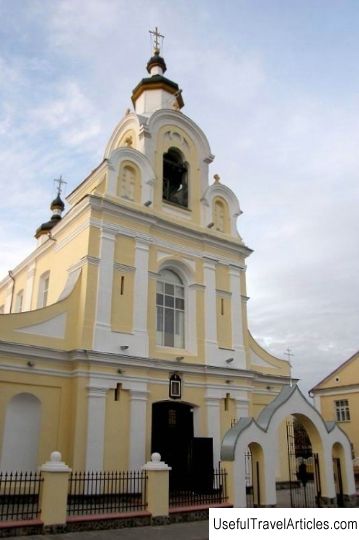Orthodox Cathedral of St. Nicholas description and photos - Latvia: Liepaja
Rating: 8,3/10 (5433 votes) 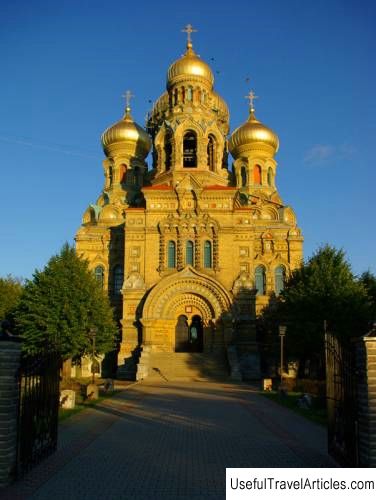
Orthodox Cathedral of St. Nicholas description and photos - Latvia: Liepaja. Detailed information about the attraction. Description, photographs and a map showing the nearest significant objects. The name in English is Orthodox Cathedral of St. Nicholas. Photo and descriptionThe Orthodox Cathedral of St. Nicholas is one of the most beautiful, impressive and memorable sights of the city of Liepaja. The construction of the temple began in June 1900. This was done by the Russian military department. And after 3 years, Sovereign Emperor Nicholas II and his family participated in the consecration of the cathedral. The idea for its creation belongs to the famous Petersburg architect V.I. Kosyakov. The outlines of the temple are similar to a ship, and at the base of the cross there is an anchor representing a symbol of hope in the restless sea of life. St. Nicholas Cathedral stands on a high concrete foundation, finished with sandstone and granite. The walls are made of red bricks and overlaid with yellow figured bricks intertwined with fancy patterns. The temple has 5 domes: central and 4 small ones, symbolizing Jesus Christ and 4 apostles. Above the main entrance to the temple, there is a high bell tower, which resembles John the Baptist, proclaiming the Kingdom of God. The main altar, like the entire cathedral, was consecrated in the name of St. Nicholas the Wonderworker. For sailors, Nicholas the Wonderworker has been considered a heavenly patron and prayer book since time immemorial. The southern side-altar (altar) was consecrated in honor of the Epiphany (Baptism of the Lord). Northern - in honor of St. Alexis the Wonderworker, who lived in the XIV century. The four pediments of the cathedral are decorated with inscriptions from the Holy Scriptures in the Church Slavonic language and icons from a mosaic made of gold. And they were made by craftsmen from St. Petersburg. Inside the cathedral there are 4 arched crossing arches, which hold the domed vault and central drum. Such an architectural idea significantly increases the internal space and provides the opportunity to observe the service from anywhere in the temple. The interior of the temple is magnificent. These are gilded icon cases (a special decorated cabinet (often folding) or a glazed shelf for icons), and 3 two-tier iconostases. 3 marble staircases (at each of 3 side-altars) lead to the sole (elevation of the floor in front of the altar barrier or iconostasis), which is fenced with forged gratings. Above the marble altar of the central altar was a gilded canopy, meaning the Protection of God over the earth. 4 bronze chandeliers hung from the crosshairs of the arches and resembled heavenly bodies. Archpriest Vladimir Arkhangelsky worked in St. Nicholas Cathedral for a very long period of time and was its first rector. The sailors of the squadron came to the temple and prayed. Later they went on a distant Pacific campaign. During the First World War, the interior of the cathedral was badly damaged, but still rare divine services were performed. Before the destruction of the church, some of the icons and other church things were saved and taken to other Orthodox churches. During the Great Patriotic War, a German air defense post was organized in the cathedral. The bronze bells were removed. When the Soviet troops returned, a sailors' club was set up in the temple. Everything that once reminded of the temple's true purpose has been altered or destroyed. At the end of the 80s, a movement began to return the St. Nicholas Cathedral to the Orthodox Church. On June 2, 1990 (on the day of commemoration of St. Alexis) Bishop Alexander of Riga and Latvia, with the participation of a large number of worshipers, performed a prayer service at the closed doors of the church. In September 1991, after prolonged resistance, the military left the temple. The first service was held on December 19, 1991 (in a new style), on the day of memory of St. Nicholas the Wonderworker. The service was attended by the city authorities, Liepaja clergy, military. A religious procession was organized and a thanksgiving service was served. In order to quickly resume the activities of the temple, they made cosmetic repairs in the southern (Epiphany) side-chapel, prepared everything that was necessary for the service. And on January 6, 1992, with the blessing of the Bishop of Riga and Latvia, Alexander, a small consecration of the church took place, and on January 7 - the first Divine Liturgy. From that very day, services in the temple began to be held regularly. Thanks to donations from parishioners, work continues to restore the temple. Now the domes of the Naval Cathedral are again decorated with crosses. On July 20, 1997, Archbishop of Riga and All Latvia Alexander, in collaboration with the Liepaja and Riga clergy, performed the great consecration of the central altar and the entire church. Now at the church there is a Sunday school not only for children, but also for adults. The Naval Cathedral of St. Nicholas is truly the pearl of Liepaja. It is worth seeing and enjoying its beauty and grandeur. As they say, it's better to see once ...           We also recommend reading Malia description and photos - Greece: Crete Topic: Orthodox Cathedral of St. Nicholas description and photos - Latvia: Liepaja. |
